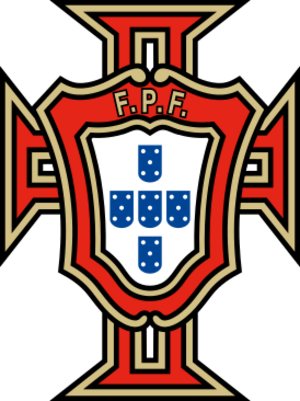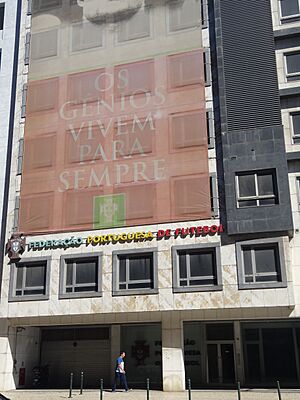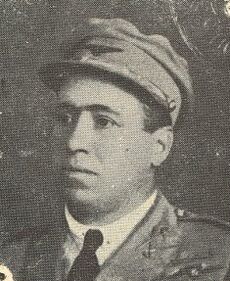Portuguese Football Federation facts for kids
| UEFA | |
|---|---|
 |
|
| Full name | Lua error in Module:Wd at line 1575: attempt to index field 'wikibase' (a nil value). |
| Founded | 31 March 1913 (as Portuguese Football Union) |
| Folded | Lua error in Module:Wd at line 1575: attempt to index field 'wikibase' (a nil value). |
| Headquarters | Cidade do Futebol, Cruz Quebrada-Dafundo, Oeiras, Portugal |
| FIFA affiliation | 1923 |
| UEFA affiliation | 1954 |
| President | Pedro Proença |
The Portuguese Football Federation (often called FPF) is the main group that manages football in Portugal. It was started in 1914 as the Portuguese Football Union. Later, in 1926, it changed its name to the Portuguese Football Federation. Its main office is in the City of Football in Oeiras. The FPF joined FIFA in 1923 and was also one of the first members of UEFA.
The FPF takes care of all types of football in Portugal, for both professional and amateur players. It organizes important competitions like the Campeonato de Portugal, the Taça de Portugal, and the Supertaça Cândido de Oliveira. The FPF also chooses the coaches and managers for the Portugal national football team (men's), women's, and youth national teams. The men's and women's Portugal national futsal team and Portugal national beach soccer team are also managed by the FPF.
Contents
History of Portuguese Football
How the FPF Started
The Portuguese Football Union was created on March 31, 1914. It was formed by three regional football groups from Lisbon, Portalegre, and Porto. This union later became the Portuguese Football Federation on May 28, 1926. The first rules for the new group were made public on January 12, 1914.
In its early years, the Portuguese Football Union mostly organized games between teams from Lisbon and Porto. It also helped Portugal join FIFA. Portugal became a full member of FIFA in May 1923 at a meeting in Geneva. The first rules guided Portuguese football until 1938.
Portugal's first national championship, the Campeonato de Portugal, started in 1921. This was a knock-out tournament, similar to today's Taça de Portugal. Its start was delayed because of the First World War.
The name "Portuguese Football Federation" was officially adopted on December 3, 1938. João Luís de Moura was chosen as the first president of the newly named federation. In 1954, Portugal became one of the founding members of UEFA in Basel, Switzerland. The FPF moved its main office seven times before settling at Praça da Alegria, nº 25, in 1968.
Important Moments and Leaders
In 1986, Silva Resende became the president. During his time, the Portugal national football team faced some challenges at the 1986 FIFA World Cup in Mexico. The players had some disagreements with the federation and made certain demands. Despite these issues, Resende stayed as president until 1989.
In 1996, Gilberto Madaíl was elected as the 30th president of the FPF. On October 12, 1999, Portugal was chosen to host UEFA Euro 2004. This was a big event for Portuguese football. On October 12, 2004, the FPF moved its headquarters for the eighth time to a building on Alexandre Herculano avenue.
Recent Times and Future Plans
After the 2010 FIFA World Cup, Fernando Gomes was elected as the new president of the FPF on December 10, 2011. On December 3, 2018, Portugal was announced as the host country for the 2019 UEFA Nations League Finals.
On October 8, 2020, Fernando Gomes and his Spanish counterpart confirmed that Portugal and Spain would try to host the 2030 FIFA World Cup together. On October 4, 2023, Morocco joined their bid. This means Portugal, Spain, and Morocco are the only candidates to host the 2030 FIFA World Cup.
How the FPF Works

Governing Bodies
The FPF has different groups that help it manage football. These groups make sure that sports are fair and safe. They also work to prevent violence, cheating, and corruption in sports.
General Assembly
The General Assembly is where important decisions are made for the FPF. It discusses all matters that are not handled by other specific FPF groups. Members of national football organizations are part of this assembly.
Board
The FPF Board includes the president of the FPF and three vice-presidents. These vice-presidents handle administrative, financial, and sports matters. There are also five directors on the Board.
Council of Justice
The Justice Council has a president, a vice-president, and five members. All members are law graduates. This council meets when needed and makes decisions based on facts and laws.
Disciplinary Board
The Disciplinary Board also has a president, a vice-president, and five members, all law graduates. This board looks into and punishes any rule-breaking by people involved with the FPF.
Arbitration Council
The Arbitration Council is in charge of managing how referees work in FPF competitions. It has a president, a vice-president, and five members who are experts in refereeing.
Fiscal Council
The Supervisory Board checks the FPF's finances. It has a president, a vice-president, and three members. These members have special training in finance. This board meets every three months or when necessary.
FPF Structure
Members
The FPF is made up of 22 regional football groups. These groups manage football in different areas of Portugal. Even though some districts like the Azores and Madeira changed in 1976, their football groups still exist.
Presidents
- Luís Peixoto Guimarães (1922–1925)
- Franklin Nunes (1925–1927)
- João Luís de Moura (1927–1928)
- Luís Plácido de Sousa (1929)
- Salazar Carreira (1930–1931)
- Abílio Lagoas (1931–1932)
- Raúl Vieira (1934)
- Cruz Filipe (1934–1942)
- Pires de Lima (1943–1944)
- Bento Coelho da Rocha (1944–1946)
- André Navarro (1946–1951)
- Maia Loureiro (1951–1954)
- Ângelo Ferrari (1954–1957)
- Maia Loureiro (1957–1960)
- Francisco Mega and Paulo Sarmento (1960–1963)
- Justino Pinheiro Machado (1963–1967)
- Cazal Ribeiro (1967–1969)
- Matos Correia (1970–1971)
- Martins Canaverde (1972–1974)
- Jorge Fagundes (1974–1976)
- António Ribeiro Magalhães (1976)
- António Marques (1976–1979)
- Morais Leitão (1979–1980)
- António Ribeiro Magalhães (1980–1981)
- Romão Martins (1981–1983)
- Silva Resende (1983–1989)
- João Rodrigues (1989–1992)
- A. Lopes da Silva (1992–1993)
- Vitor Vasques (1993–1996)
- Gilberto Madaíl (1996–2011)
- Fernando Gomes (2011–2025)
- Pedro Proença (2025–present)
City of Football
On March 31, 2016, the Portuguese Football Federation opened the City of Football. This is a special sports center where the national teams train. The President of Portugal Marcelo Rebelo de Sousa was there for the opening. This center was built without money from the government.
The City of Football took 17 months to build and cost 15 million euros. It is located in Oeiras. The day after it opened, an under-15 football tournament was held there. The center has three and a half football fields, two gyms, and eleven changing rooms.
Kit Supplier
In November 2024, the Portuguese Football Federation signed a new deal with PUMA. PUMA will provide uniforms and equipment for all male, female, and youth football teams. This also includes futsal, beach football, and E-Sports teams. This new agreement means the FPF's long partnership with Nike, which started in 1997, has ended. The new deal with PUMA officially began in 2025.
See also
 In Spanish: Federación Portuguesa de Fútbol para niños
In Spanish: Federación Portuguesa de Fútbol para niños


